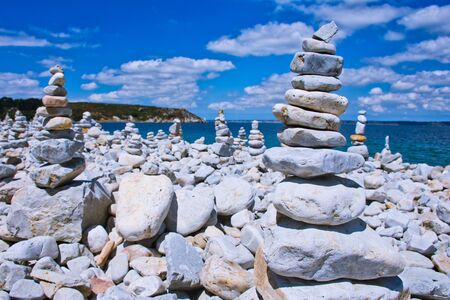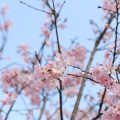Introduction: Weaving Legends and Stones
Across the rolling hills and misty moors of the British Isles, legends whisper through ancient woodlands and along windswept coasts. This tapestry of myth and tradition is not merely a relic of the past, but a living thread woven into the fabric of daily life. In recent years, the British fascination with folklore has found a new companion: the mystical artistry of Feng Shui and the enchanting world of crystal energy. As more people in the UK turn to holistic practices for balance and wellbeing, these old stories and new spiritual tools have begun to intertwine in intriguing ways. This article explores how cherished tales from the Isles blend with Eastern philosophies, particularly Feng Shui, and why crystals have captured the modern British imagination. Together, they form a vibrant cultural mosaic—where legends breathe anew and stones shimmer with possibility, inviting us to discover harmony in both history and home.
2. British Folklore: Spirits, Legends, and Local Lore
The British Isles are woven with a tapestry of folklore that transcends the rolling hills, misty moors, and ancient woodlands. From the mystical faeries of Devon to the enigmatic Green Men carved in centuries-old churches, every region offers its own unique legends that continue to stir the national imagination. These tales are not merely relics of the past; they live on in local traditions, seasonal festivals, and even daily conversation.
Unearthing the Spirits of the Land
In many rural communities, belief in nature spirits—often called “the Good Folk” or faeries—remains quietly persistent. These beings are thought to protect sacred groves and springs, rewarding those who respect them and tricking those who do not. Meanwhile, figures like the Green Man symbolise rebirth and the eternal cycle of growth, embodying humanity’s deep connection to the land. Such motifs echo through British architecture, literature, and art.
Key Figures in British Folklore
| Figure | Region | Symbolic Meaning |
|---|---|---|
| Faeries | Nationwide (notably Cornwall & Devon) | Guardianship of nature, mischief, blessing or curse |
| Green Man | England & Wales (church carvings) | Rebirth, fertility, cycles of life |
| Banshee | Ireland & Scottish Highlands | Portent of death or change |
| Piskies (Pixies) | Cornwall & Devon | Lucky mischief-makers, protectors of travellers |
| Selkies | Shetland & Orkney Islands | Transformation, longing for home, love across worlds |
The Living Influence of Myth and Legend
These stories continue to shape British cultural identity. Modern festivals—like Beltane fire celebrations in Scotland or Maypole dances in English villages—draw directly from ancient customs honouring these spirits and natural forces. Even today, locals might leave offerings at a fairy tree or hesitate before disturbing a mossy mound rumoured to be faerie-haunted. This living folklore subtly influences how people interact with their environment and each other, creating a unique harmony between past tradition and present-day life.

3. Crystals in the British Isles: History and Modern Curiosity
The story of crystals in Britain is a tale woven through centuries, echoing from the ancient woodlands of the Druids to the bustling curiosity shops of contemporary high streets. Long before crystals became fashionable accessories or objects of spiritual intrigue, they held sacred significance among the earliest inhabitants of these isles. The Druids—those mysterious keepers of nature’s wisdom—regarded stones and crystals as vessels of earth’s energy, often using quartz and other native minerals in ritualistic ceremonies believed to harmonise human life with the natural world.
Moving forward to the Victorian era, Britain experienced a remarkable surge in mineral collecting. The Victorians, ever fascinated by natural history and the wonders catalogued from across the empire, brought crystals out from ritual secrecy and into drawing rooms, glass cabinets, and scholarly circles. Collecting became both an intellectual pursuit and a status symbol; amethysts from Scotland’s Cairngorms and Cornish tin-bound minerals found pride of place in homes and museums alike. While their interest was more scientific than spiritual, it laid the foundation for a national appreciation of Britain’s geological treasures.
Fast-forward to today, and there is a renewed fascination with crystal energy throughout the United Kingdom. Britons now flock to markets in Glastonbury or online boutiques seeking not only beautiful specimens but also their purported metaphysical benefits. This modern curiosity blends traditional folklore with global trends such as Feng Shui, creating a distinctly British approach to crystal use—one that respects ancestral roots while embracing new perspectives on wellbeing. Whether placed on a mantelpiece for aesthetic delight or arranged according to Feng Shui principles for harmony and prosperity, crystals continue their journey through British culture, adapting yet enduring as objects of wonder and meaning.
Feng Shui in the UK: East Meets West
As the gentle mists roll over the British countryside and city streets alike, Feng Shui has quietly woven itself into the fabric of British living, harmonising with local traditions and sensibilities. The UK, known for its eclectic embrace of global customs, has adopted Feng Shui not as a mere trend but as a meaningful practice, adapting its Eastern principles to suit British homes, gardens, and even public spaces. From Victorian townhouses in London to rustic cottages in Cornwall, homeowners are integrating Feng Shui’s spatial philosophies with beloved British folklore and design motifs.
This cultural blending manifests in various ways. For instance, crystal energy—a cornerstone of both Chinese metaphysics and Celtic lore—finds fresh expression on British soil. Quartz clusters rest alongside antique teapots on mantelpieces; amethyst geodes sit nestled among bluebells in country gardens. Meanwhile, the classic Bagua map is interpreted through the lens of British architecture, guiding not just interior arrangement but also garden layouts inspired by ancient druidic circles or medieval knot gardens.
| Traditional Feng Shui Element | British Adaptation |
|---|---|
| Water Features | Pond with water lilies reflecting Arthurian legends |
| Crystals for Energy Flow | Cornish quartz placed in hearths and sills |
| Entrance Placement | Welcoming wreaths combined with protective horseshoes above doors |
| Living Plant Arrangements | Herb gardens featuring native rosemary and sage for both energy and culinary use |
The marriage of Feng Shui with British folklore goes beyond aesthetics—it reflects a profound respect for place, history, and the unseen energies that shape daily life. In urban environments such as Edinburgh or Manchester, architects consult Feng Shui practitioners to enhance wellbeing in offices and public parks, while local tales of faeries and ley lines subtly inform site selection and orientation. This cross-cultural harmony produces spaces that feel intuitively balanced: modern yet rooted, practical yet enchanted.
The result is a uniquely British form of Feng Shui that honours both dragon lines and ley lines, inviting residents to dwell within homes where East meets West—not just at the decorative level but deep within the spirit of the Isles themselves.
5. Crystal Energy and Folkloric Sites: From Stone Circles to Cottage Windowsills
The British Isles are steeped in legend, where the landscape itself is woven with stories of ancient power and mystical resonance. Across the rolling moors, winding lanes, and quiet hamlets, one finds a rich tapestry of sacred sites—each with its own lore and connection to stone and crystal energy. The synergy between these legendary places and the modern understanding of crystals in Feng Shui creates a fascinating bridge between past and present, tradition and innovation.
Stone Circles: Guardians of Ancient Energy
Among Britain’s most iconic symbols of mystery are the stone circles, such as Stonehenge and Avebury. These prehistoric monuments have long been shrouded in myth, believed by some to be portals to other realms or powerful centres of earth energy. In local folklore, it was said that these stones could heal ailments or bestow protection upon those who walked among them at sunrise on midsummer’s day. Modern practitioners often visit these sites with crystals in hand, seeking to amplify their stones’ energy by aligning them with the ley lines said to pulse beneath the earth.
Glastonbury: Heart of Spiritual Legend
No discussion of British folkloric sites would be complete without mention of Glastonbury—a place entwined with Arthurian legend, Christian pilgrimage, and pagan rites. The Tor and Chalice Well are considered by many to be potent sources of spiritual energy. Crystals such as amethyst and clear quartz are frequently placed at these sites or carried by visitors hoping to tap into the area’s reputed healing powers. Some even use water from the Red Spring to cleanse their stones, blending folk wisdom with contemporary crystal care rituals.
Village Wells and Cottage Windowsills: Everyday Magic
Beyond grand monuments, British folklore endures in more modest settings: village wells once believed to house guardian spirits, or cottage windowsills lined with agate, jet, or hagstones for luck and safety. It was common practice in rural communities to place crystals near doorways or hearths—mirroring today’s Feng Shui principles of protecting the home and enhancing positive flow. This interplay between superstition and subtle energy continues in many British households, where amulets and stones quietly uphold centuries-old traditions.
The Living Legacy: Folklore Meets Feng Shui
The intersection of crystal energy with legendary British sites reveals a living heritage—one that evolves yet remains rooted in respect for land and lore. Whether through ritual at an ancient circle or the simple placement of a protective stone on a windowsill, Britons continue to honour their folkloric past while adapting these practices for modern wellbeing. In this ongoing story, the magic of crystals finds new purpose amidst the mists and myths of the Isles.
6. Everyday Rituals: Bringing British Folklore and Crystal Wisdom into Daily Life
Infusing your daily life with the magic of British folklore and the serene energy of crystals can be both grounding and uplifting. Whether you live in a bustling city flat or a countryside cottage, there are simple, culturally resonant ways to weave these ancient traditions into your modern routine for greater wellness and tranquillity.
The Hearth: Heart of the British Home
Start with the hearth, long considered the spiritual centre of a British home. Place a piece of smoky quartz or jet on your mantelpiece—stones often found along British coasts and moors—to absorb negativity and protect against unwanted energies. For added charm, tuck sprigs of rosemary or rowan berries (both steeped in local lore) around your crystal display as symbols of protection and good fortune.
Gardens and Green Spaces: Channeling Earthly Magic
British gardens are sanctuaries for both wildlife and wellbeing. Bury small pieces of green aventurine or moss agate at the base of beloved trees or beneath herb beds to encourage growth and harmony, echoing old tales where stones blessed the land. Hang hag stones (naturally holed pebbles) from branches to ward off bad luck, a tradition especially beloved along Britain’s coastal paths.
Blessing Entrances: Threshold Traditions
According to folk custom, entrances hold particular power. Keep a bowl of tumbled amethyst or clear quartz by your front door to invite calm and clarity into your home. Sprinkle a pinch of salt—another time-honoured protective element—along doorways on the first day of each month for renewal, much like generations before you.
Morning Mindfulness with Crystals
Begin each day with a mindful moment. Hold a piece of British blue john or selenite in your palm while sipping your morning tea, setting an intention inspired by Celtic blessings or local proverbs. Let the stone’s presence remind you to embrace gratitude and resilience as you face the day ahead.
Evening Wind-Down: Folkloric Calm
As dusk falls, invoke peaceful sleep by placing moonstone or lepidolite on your bedside table—a subtle nod to ancient beliefs in stones that soothe nightmares. Recite a short bedtime rhyme passed down from British tradition, blending folklore with self-care in a uniquely local ritual.
Celebrating the Seasons
Mark seasonal shifts with simple ceremonies: lay out citrine during Midsummer for joy, or black tourmaline at Samhain to honour ancestors. Incorporate local flowers such as bluebells in spring or holly in winter alongside your crystals, drawing strength from both earth and story.
By thoughtfully combining crystal wisdom with the rich tapestry of British folklore, you create meaningful rituals that nurture body and spirit—and keep age-old traditions alive in contemporary settings.
7. Conclusion: Reviving Magic in the Modern Isles
As we reach the end of our exploration into Tales from the Isles: British Folklore and Crystal Energy in Feng Shui, we find ourselves standing at a crossroads where tradition meets transformation. The ancient stories whispered across the moors, the shimmering presence of crystals echoing in old stone circles, and the rhythm of contemporary British life together compose a new narrative tapestry—a living folklore for the 21st century.
In weaving together legendary tales with the subtle energies of crystals and the guiding principles of Feng Shui, we invite a sense of wonder back into daily existence. This fusion is not mere nostalgia; it is a conscious act of revival, re-enchanting familiar landscapes with fresh significance. Where once there were fairy rings and mysterious lights on misty fells, now there are amethyst clusters on mantelpieces and selenite towers on city windowsills—modern talismans that honour ancient beliefs while adapting to today’s needs.
This union also speaks to a uniquely British sensibility: a love of story, an appreciation for nature’s quiet power, and an openness to reinterpretation. By embracing both the wisdom of our ancestors and the promise of holistic wellbeing, we shape homes and lives that are grounded yet open to magic. Crystals become more than decorative objects; they serve as bridges between memory and possibility, rooting us in place while inviting positive energy to flow freely.
Ultimately, this contemporary blend of folklore and Feng Shui encourages us to look anew at our surroundings—be they rural cottages or urban flats—and to rediscover hidden layers of meaning. In doing so, we participate in an ongoing tradition of storytelling and transformation, ensuring that the magic of the Isles continues to shimmer beneath the surface of everyday life.

